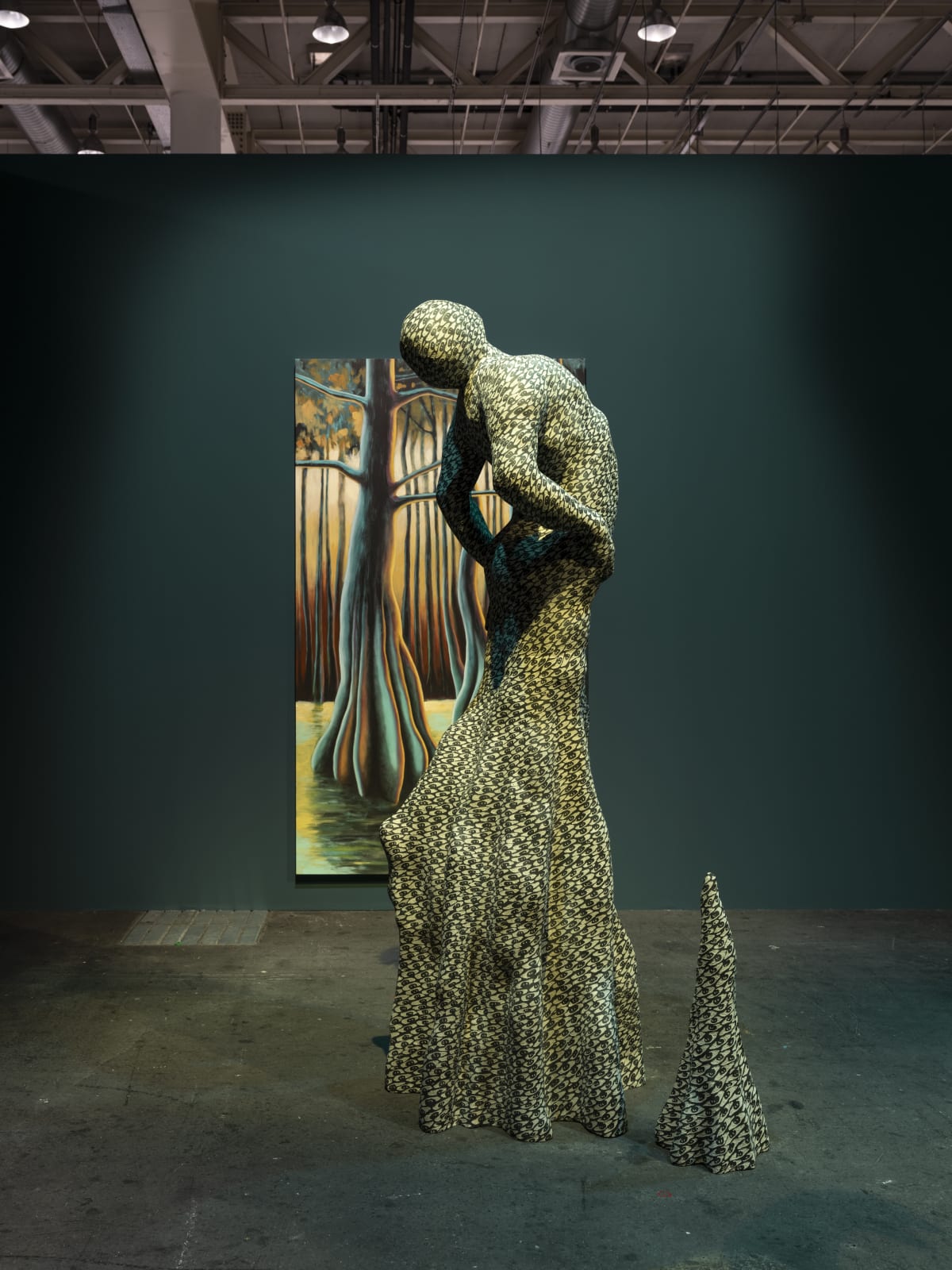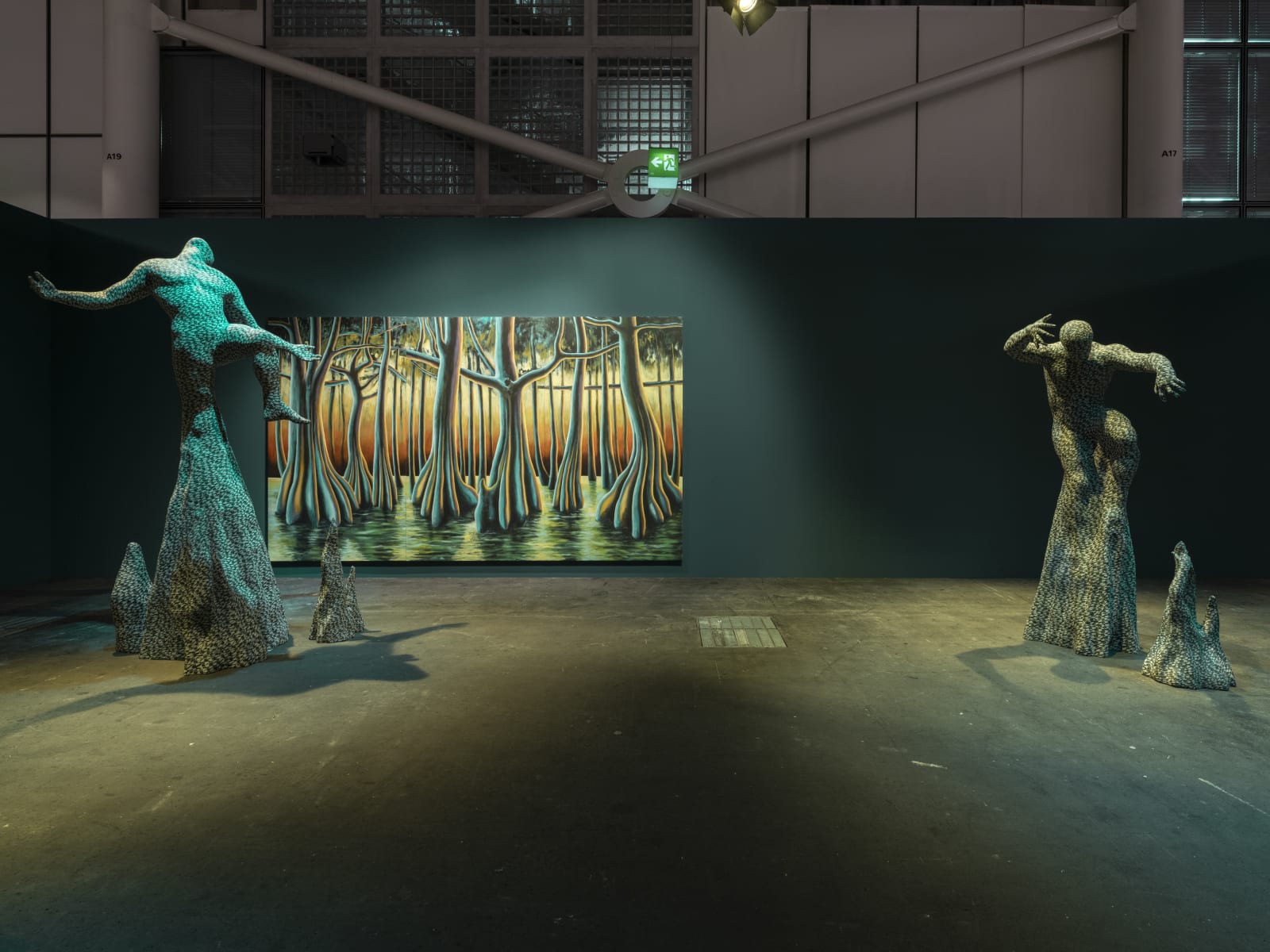Unlimited
Art Basel 2025
Basel, Switzerland
, 18 - 21 June 2025
Past gallery exhibitions exhibition
Overview
Didier William (*1983, Lives and works in Philadelphia), who immigrated with his family from Port-au-Prince, Haiti, to Miami at the age of six, explores in his work constructions of Blackness, emphasizing the nuances of diasporic identity and his own lived experiences.
In this series of sculptures and paintings, Didier William views the Gulf South’s bald cypress trees as harbingers of history, given their ability to live for over a thousand years. These ancient trees, some predating European colonization, have witnessed cataclysmic disasters and human impact, from the transatlantic slave trade to the Louisiana Purchase and the evolving regional landscape.
The installation features four larger-than-life figures emerging from the trunks of these trees, each adorned with carved black-and-white eyes that gaze outward in all directions. Surrounding these figures are monumental paintings of trees, with branches extending beyond the picture plane. Together, the sculptures and paintings invert the traditional dynamic, transforming humans—typically nature's observers—into the ones being observed. The inspiration for this series came from William’s experience boating through Southern swamps, where he encountered the cypress trees. William describes his work as a search for home and stable ground. For the Gulf South, bald cypress trees embody this stability, flourishing along rivers and wetlands, absorbing floodwaters, and preventing coastal erosion. The steadfast, silent trees lend perspective to the region’s human history.
In Gesture to Home, William reimagines the cypress knees as transhistorical vessels of the energy embodied by these omnipresent eyes. In the sculptures that are several meters tall and carved with countless eyes, figures rise upward from tapering mounds, their forms buttressed like the trunks of the trees. This interplay creates a circuit of interaction between the observer and the observed, dissolving the boundaries between subject and object and alluding to the asymmetrical power dynamics of colonialism. The artist reflects: “In the earlier and more recent works, by the time you get close enough to see that these are carved eyes, you realize they are looking back at you just as intently as you’re looking at them.” For William, the eyes symbolize a return of the gaze, challenging the possessiveness of sight. They act as a kind of armor, defining the figures as active, dynamic entities intertwined with the woodblock-patterned fabrics and reaching limbs around them.
Installation Views
Be the first to know updates about Galerie Peter Kilchmann
* denotes required fields
We will process the personal data you have supplied to communicate with you in accordance with our Privacy Policy. You can unsubscribe or change your preferences at any time by clicking the link in our emails.










